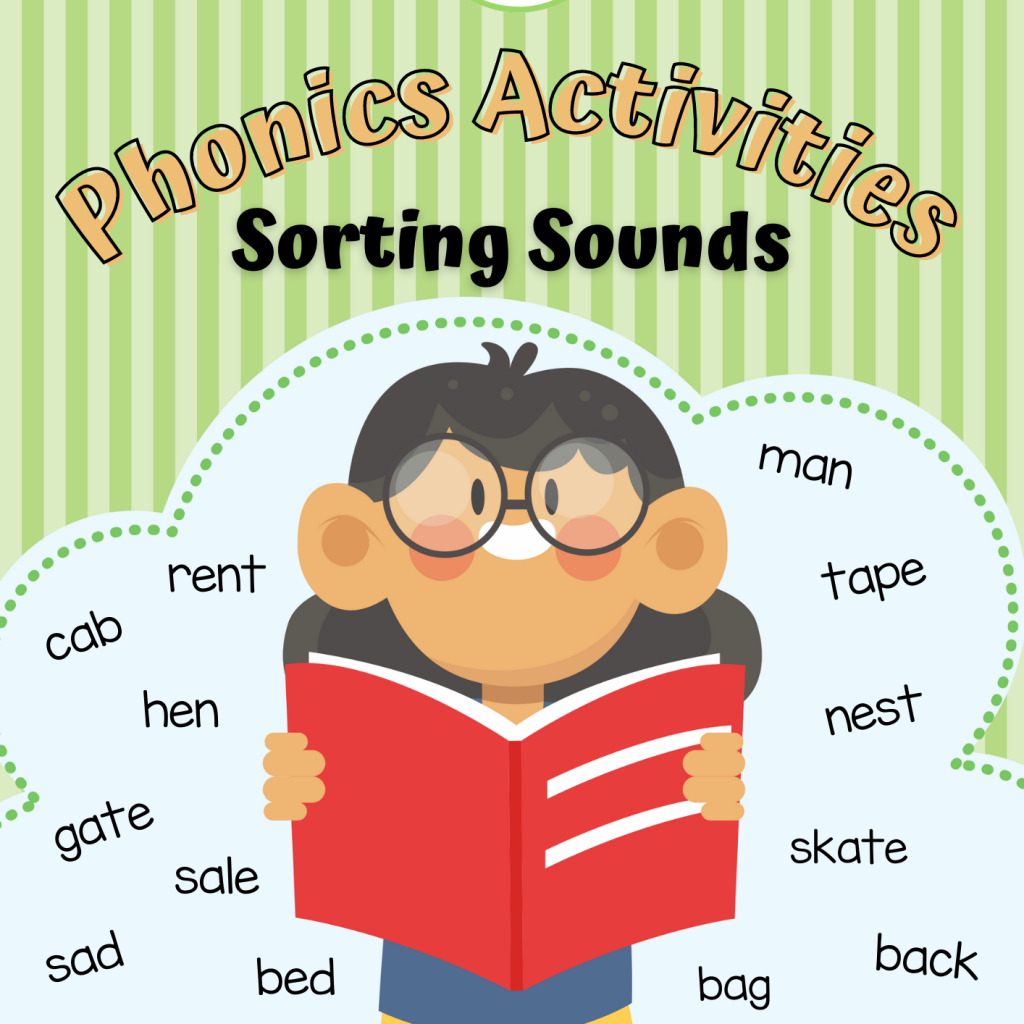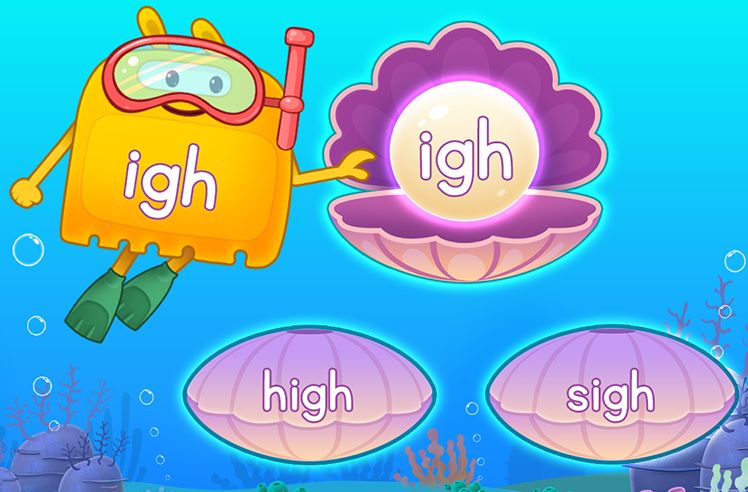Teaching phonics can be exciting and highly effective with the right set of resources! In this guide, we’ll explore 15 engaging phonics activities that include printable worksheets, seasonal themes, and fun, hands-on methods for kids of all ages.
Phonics Activities:
Whether you’re a teacher or a parent, these activities are perfect for helping preschoolers, kindergarteners, and young grade-schoolers build essential reading skills.
1. Phonics Activities Worksheets for Early Learners:
Phonics worksheets are versatile tools that support letter recognition, sound matching, and blending skills. Printable phonics activity sheets can be tailored for different learning stages, allowing kids to gradually advance from simple sound identification to word formation.
- Focus: Reinforcing letter sounds and blending.
- Best For: Preschoolers to 1st grade.
2. Short Sound Phonics Activities Printables:
Starting with short vowel sounds is key for early readers. Short sound phonics printables make it easier for kids to recognize and practice these foundational sounds.

- Example: Short ‘a’ words like “cat” and “bat.”
- Use: Daily practice to boost familiarity with short sounds.
3. Free Printable Phonics Activities:
Access to free printable phonics_activities helps create a varied learning routine. These activities can include letter tracing, sound matching, and initial blending.
- Where to Find: Online resources like Education.com.
- Use: Practice at home or in the classroom.
4. Phonics Activities for Kindergarten:
Kindergarten is a crucial time to solidify phonics skills. Engaging phonics activities like sorting sounds, matching letters with images, and magical stories create an enjoyable and immersive learning experience. These activities not only make learning fun but also help young learners connect sounds and letters in meaningful ways.
- Example: Matching objects with corresponding beginning sounds.
- Goal: Build basic reading readiness.
5. Fun Phonics Activities for Preschoolers:
For preschoolers, phonics should feel like play. Activities that encourage sound recognition, such as sound-matching games or interactive storybooks, are ideal.
- Activity Ideas: Sound hopscotch, sensory bins with letters.
- Purpose: Promote early phonics awareness through play.
6. Phonics Online Activities:
With digital learning on the rise, phonics online activities are a valuable tool. These platforms often offer phonics games, video lessons, and interactive worksheets.

- Popular Options: ABCmouse, Starfall.
- Benefit: Interactive and accessible for independent practice.
7. Nursery Phonics Activities for Sound Recognition:
Nursery phonics activities lay the foundation for reading by focusing on sound recognition and simple phonemic awareness tasks. These activities make use of familiar songs and rhymes to introduce sounds.
- Example: Singing phonics-based nursery rhymes.
- Goal: Build comfort with sound and rhythm.
8. Multisensory Phonics Activities for All Ages:
Multisensory phonics activities engage sight, sound, and touch, making phonics learning accessible for different learning styles. Examples include tracing letters in sand or using flashcards with textured letters.

- Why Multisensory Works: Engages multiple senses to reinforce learning.
- Recommended For: Preschool to 2nd grade.
9. Halloween Phonics Activities:
Seasonal activities add excitement to learning phonics. Halloween activities like phonics worksheets and games can feature themed words, spooky rhymes, and letter scavenger hunts.
Example: Matching Halloween words by sound, such as “bat” and “cat.”
Fun Factor: These Halloween phonics_activities make phonics festive and engaging for kids.
10. Phonics Activities for 1st Grade:
As students advance, they’re ready for more complex phonics_activities that include blends and digraphs. Phonics activities for 1st grade often involve reading simple sentences and identifying patterns.
- Activity Ideas: Blending boards, digraph flashcards.
- Focus: Building fluency and reading confidence.
11. Phonics Activities for 2nd Grade:
- Word Family Sort – Students categorize words into “families” based on similar sounds, reinforcing patterns like “-at,” “-an,” and “-it.”
- Silent Letters Hunt – Kids find and highlight silent letters in words (e.g., “knight” or “wrist”) to strengthen their understanding of complex sounds.
- Phonics Bingo – Create Bingo cards with blends, digraphs, or vowel sounds, allowing kids to mark words that match the sounds called.
12. Phonics Activities for 3rd Grade:
- Suffix Matching – Practice adding common suffixes like “-ed,” “-ing,” and “-s” to root words, understanding how they change word meanings.
- Long and Short Vowel Sort – Kids sort words based on long or short vowel sounds, a great way to improve pronunciation and reading fluency.
- Prefix Challenge – Introduce common prefixes like “un-,” “re-,” and “pre-” and let kids create new words, enhancing vocabulary and word formation skills.
13. Thanksgiving Phonics Activities:
Thanksgiving phonics activities are a fun way to celebrate the season. These might include worksheets with Thanksgiving-themed vocabulary and matching exercises.
- Example: Turkey-themed word families (e.g., words ending in “-at”).
- Purpose: Enhance phonics skills with seasonal context.
14. Christmas Phonics Activities:
Holiday phonics Christmas activities keep learning festive. Christmas phonics printables can feature holiday words, blending games, and themed stories to practice phonics.
- Idea: Santa’s Sound Search – finding objects that start with certain letters.
- Benefit: Keeps kids engaged during holiday breaks.
15. Hands-On Phonics Activities:
Hands-on phonics activities are perfect for tactile learners. These might include using manipulatives like letter tiles or making letters with clay.
- Examples: Building words with blocks, letter hunt in the sand.
- Focus: Interactive and kinesthetic learning.
16. Phonics Awareness Activities for Beginning Readers:
Phonics awareness activities target the connection between sounds and letters. Activities like sorting objects by beginning sound or practicing rhymes boost phonemic awareness.
- Examples: Rhyming word games, sound sorting baskets.
- Goal: Prepare for early reading success.
17. Phonics Blending Activities for Better Fluency:
Blending activities are crucial for helping kids move from single sounds to reading complete words. Blending boards and flip books make blending practice interactive and fun.
- Use: Daily practice to improve reading fluency.
- Best For: Kindergarten to 1st grade readers.
Supporting Phonics Skills at Home:
You can support phonics development at home with these engaging activities and printable worksheets. Incorporating seasonal and hands-on phonics activities will keep kids excited and motivated to learn. For more free resources, try trusted educational sites like Education.com, where a variety of phonics worksheets are available.
Conclusion:
Incorporating phonics activities into daily learning helps children build essential reading skills through engaging, hands-on practice. With options like phonics worksheets and free printable phonics activities, kids from preschool to 3rd grade can benefit from customized exercises suited to their level. Whether they’re working on short sound phonics activities printables or activities for kindergarten, these resources provide enjoyable learning opportunities.
Using a mix of phonics online activities, multisensory phonics activities, and hands-on phonics activities, you can create a learning environment that nurtures early readers and strengthens their phonics skills at each grade level.
FAQS:
What is an example of a phonics activity?
A common phonics activity is sound matching, where children identify pictures or objects that begin with the same sound, such as matching a “cat” with a “cup” for the initial “c” sound. This reinforces sound recognition in an interactive way.
What are the 5 skills of phonics?
The five core phonics skills are: letter recognition, sound recognition, blending sounds, segmenting sounds, and decoding words. Together, these skills help children understand the relationship between letters and sounds to read words.
What are the phonics activities in Montessori?
Montessori phonics activities include sandpaper letters for tracing and feeling letter shapes, moveable alphabets for constructing words, and sound games that emphasize phonemic awareness through play.
How to make phonics instruction fun?
Making phonics fun involves using games, songs, and hands-on activities like letter scavenger hunts, phonics bingo, and matching games, which keep kids engaged while reinforcing sound-letter connections.
What are some phonics activities?
Some popular phonics activities include flashcard games, rhyming word matches, phonics worksheets, sound-based scavenger hunts, and digital phonics games, all designed to make learning interactive and enjoyable.
External Resources:
International Literacy Association – Phonics in the Classroom
The International Literacy Association provides insights and research-based articles for educators on best practices in phonics instruction.
ILA Phonics Teaching Resources
Starfall – Free Phonics Resources
Starfall provides interactive online phonics games and printable activities for young learners, ideal for reinforcing phonics skills in a fun way.
Starfall Phonics

Empowering parents to raise happy, confident kids. Get practical parenting tips and advice on our blog, Smart Parent Guides.
